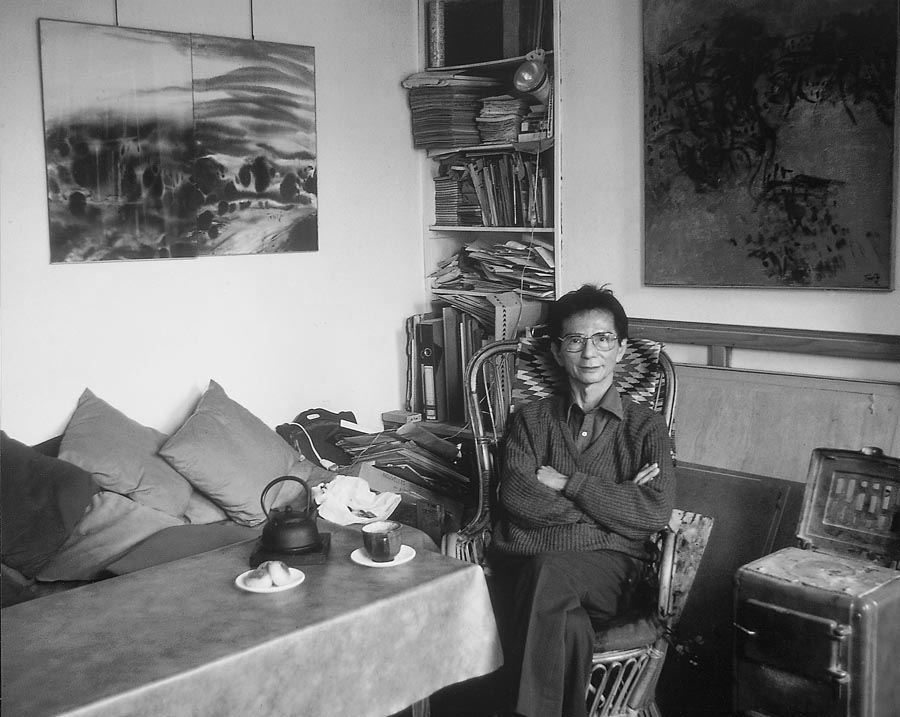T’ang Haywen (1927–1991) was a Chinese-born painter who spent most of his life in France and was part of the School of Paris (Ecole de Paris). His work is known for its fusion of the Chinese spiritual aesthetic of ink brush painting with Western abstract expressionism. His reputation has grown since his death thanks to some major retrospective exhibitions.
T’ang Haywen was born in 1927 in Xiamen in Fujian province, China. His early intellectual development was deeply influenced by his grandfather, who introduced him to the principles of Taoism and taught him calligraphy. In 1937, T’ang’s family migrated to Vietnam. At the age of 19, T’ang adopted the name Haywen: when written in Chinese, the name consists of the ideograms for « sea » and « literature ».
In 1948, T’ang moved to Paris, ostensibly to study medicine in keeping with the wishes of his father. However, once in France, T’ang soon began to pursue his ambition to be a painter. He undertook little formal artistic training, but spent much time in museums and galleries, where he closely observed the work of Western masters. He also developed a passion for travel, a constant feature of his life.
By the mid-1960s, T’ang’s work was showing a preference for gouache or ink on paper, and traditional Chinese stylistic elements were becoming a feature of his painting. His works were influenced by the aesthetic legacy of Western masters like Matisse, Turner, and the impressionists, and shaped by the spiritual elements of the Taoist approach to painting, in which the artist seeks to capture the interplay of energies that give life to the natural world.
During the 1970s, he develops an original pictorial space and begins using cardboard sheets of standard dimensions, finally favoring the diptych on paper, usually untitled and measuring 70 x 100 cm. During the 1980s he had some significant exhibitions in France; however, he did not gain any significant recognition during his lifetime. His life was guided by his encounters and he was more concerned with happiness than success.
Chinese painting and calligraphy are of the same nature and employ the same techniques: the round brush, ink and water, on paper or silk. Some consider this space to be abstract by nature, but Zao Wou-ki, Chu Teh-Chun and T’ang Haywen never thought of themselves as abstract painters. T’ang wrote in 1972: “…Our profound sensibility, related to the unconscious, can only develop and grow when nourished by the tangible, that is to say, in relation to a painting, by the recollection in our conscious memory of experiences that are sensitive, profound and durable and lived in the real world.”
T’ang Haywen’s art found a wider public after his death, thanks to several retrospective exhibitions, notably at the Oceanographic Museum in 1996, the Taipei Fine Arts Museum in Taiwan in 1997, the Musée Guimet in Paris and the gallery of the Shiseido Foundation in Tokyo in 2002. Major collections that hold his work include the Musée Guimet, the Musée Cernuschi, the Musée d’art moderne de la ville de Paris, the Art Institute of Chicago and the M+ Museum in Hong Kong.
© Portrait : Yonfan


